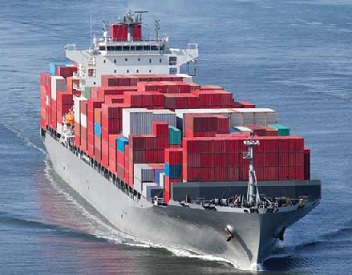
Containership operation: Handling Breakbulk,out of gauge (OOG) and Open containers
Breakbulk cargo is usually stowed on flat racks and platforms. It is vital to confirm that the breakbulk cargo itself is properly secured onto the Flat frame or Platform before loading on board.
Terminal staff must do it to the vessel's satisfaction if additional lashing or tightening of existing lashing is required.
If not, vessel operator shall be advised of the situation, and in any case, such shipment posing a danger to vessel safety shall not be accepted for carriage. Prior loading out of gauge cargo, hatch cover clearance, and cell guide clearance must be verified to confirm that there will be no contact or damage to the vessel or cargo when loaded. Close monitoring during loading will also be required as sometimes protrusion dimensions provided may not be accurate. Loading Out of gauge units will likely involve use of special equipment attached to gantry cranes.
If not, vessel operator shall be advised of the situation, and in any case, such shipment posing a danger to vessel safety shall not be accepted for carriage. Prior loading out of gauge cargo, hatch cover clearance, and cell guide clearance must be verified to confirm that there will be no contact or damage to the vessel or cargo when loaded. Close monitoring during loading will also be required as sometimes protrusion dimensions provided may not be accurate. Loading Out of gauge units will likely involve use of special equipment attached to gantry cranes.


